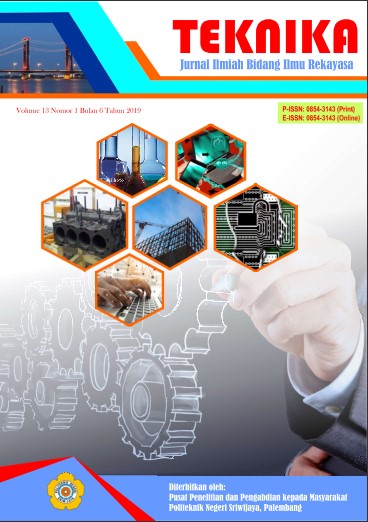Sistem Informasi Pemetaan Wilayah Rawan Kriminalitas Polresta Bandar Lampung Menggunakan K-Means Clustering
DOI:
https://doi.org/10.5281/zenodo.13358151Abstract
Crime is indeed a common problem that often occurs in everyday life anywhere, including in the city of Bandar Lampung. Various acts of crime occurr in the city of Bandar Lampung with the time and place as well as the types of events that vary, it is difficult for the people to get information on the location of crime-prone areas and safe areas. As a solution to the problem, the Geographic Information (GIS) is needed. GIS is one specific information system used to process data containing spatial information. GIS is also commonly combined with clustering method. Clustering is a method for grouping data. One method in clustering is the K-Means method. K-Means is part of a non-hierarchical cluster analysis that attempts to partition data into several clusters or groups. The results of clustering using K-Means produced 3 sets of the cluster. From the results of clustering 7 crimes that were obtained show that there were 3 Districts included in the cluster (C1) were quite vulnerable, namely the Districts of Kedaton, Rajabasa and East Teluk Betung. In cluster (C2) there were 8 vulnerable Districts namely Bumi Waras District, Enggal, Kemiling Panjang, East Tanjung Karang, Tanjung Senang, West Teluk Betung and South Teluk Betung. Whereas cluster (C3) was very vulnerable there were 9 Subdistricts namely the District of Kedamaian, Labuhan Ratu, Langkapura, Sukabumi, Sukarame, West Tanjung Karang, Tanjung Karang Pusat, North Teluk Betung and Wayhalim. GIS obtained from combining all spatial data based on the results of clustering can recommend the authorities to take action follow up areas that have high crime intensity, assist in making reports the authorities and the website will inform the public in the City of Bandar Lampung, where the locations of crime-prone areas and locations are safe.Downloads
Download data is not yet available.
References
[1] Abdilah, G.,Putra, F. A., & Renaldi, F. (2016). Penerapan Data Mining Pemakaian Air Pelanggan untuk Menentukan Klasifikasi Potensi Pemakaian Air Pelanggan Baru di PDAM Tirta Raharja Menggunakan Algoritma K- Means. 500.
[2] Ahmad, B. A., Sasmito, B., & Hani'ah. (2016). Aplikasi SIG untuk Pemetaan Persabaran Tambak di Kota Semarang. Semarang: Universitas Diponegoro.
[3] Dhuhita, W. M. (2015). Clustering Menggunakan Metode K-Means untuk Menentukan Status Gizi Balita. Jurnal Informatika, 160-174.
[4] Fujiyanti, E., & Amalia, D. R. (2015). Pemetaan Daerah Rawan Kriminal Menggunakan Sistem Informasi Geografis Metode Clustering. Jurnal ICT STMIK IKMI Cirebon, 13-25.
[5] Mochammad Aditiya Pradana (2019). Pemetaan Daerah Rawan Kriminalitas Menggunakan K-Means Clustering di Wilayah Hukum Polresta Sidoarjo: Universitas Islam Negeri Sunan Ampel.
[6] Nurjoko, ( 2016) Aplikasi datamining untuk meperediksi tingkat kelulusan mahasiswa menggunakan algoritma aprori di IIB Darmajaya Bandar lampung. Jurnal.darmajaya.ac.id
[7] Sudarsono, Nono, Agustin, Y. H., & Pratama, R. (2017). Pemetaan Daerah Rawan Kriminalitas Berbasis Web di Wilayah Hukum Pengadilan Negeri Tasikmalaya . Konferensi Nasional Sistem dan Informasi, 175-180.
[2] Ahmad, B. A., Sasmito, B., & Hani'ah. (2016). Aplikasi SIG untuk Pemetaan Persabaran Tambak di Kota Semarang. Semarang: Universitas Diponegoro.
[3] Dhuhita, W. M. (2015). Clustering Menggunakan Metode K-Means untuk Menentukan Status Gizi Balita. Jurnal Informatika, 160-174.
[4] Fujiyanti, E., & Amalia, D. R. (2015). Pemetaan Daerah Rawan Kriminal Menggunakan Sistem Informasi Geografis Metode Clustering. Jurnal ICT STMIK IKMI Cirebon, 13-25.
[5] Mochammad Aditiya Pradana (2019). Pemetaan Daerah Rawan Kriminalitas Menggunakan K-Means Clustering di Wilayah Hukum Polresta Sidoarjo: Universitas Islam Negeri Sunan Ampel.
[6] Nurjoko, ( 2016) Aplikasi datamining untuk meperediksi tingkat kelulusan mahasiswa menggunakan algoritma aprori di IIB Darmajaya Bandar lampung. Jurnal.darmajaya.ac.id
[7] Sudarsono, Nono, Agustin, Y. H., & Pratama, R. (2017). Pemetaan Daerah Rawan Kriminalitas Berbasis Web di Wilayah Hukum Pengadilan Negeri Tasikmalaya . Konferensi Nasional Sistem dan Informasi, 175-180.
Downloads
Published
2020-11-07
Issue
Section
Articles
License
Copyright (c) 2020 TEKNIKA

This work is licensed under a Creative Commons Attribution 4.0 International License.














